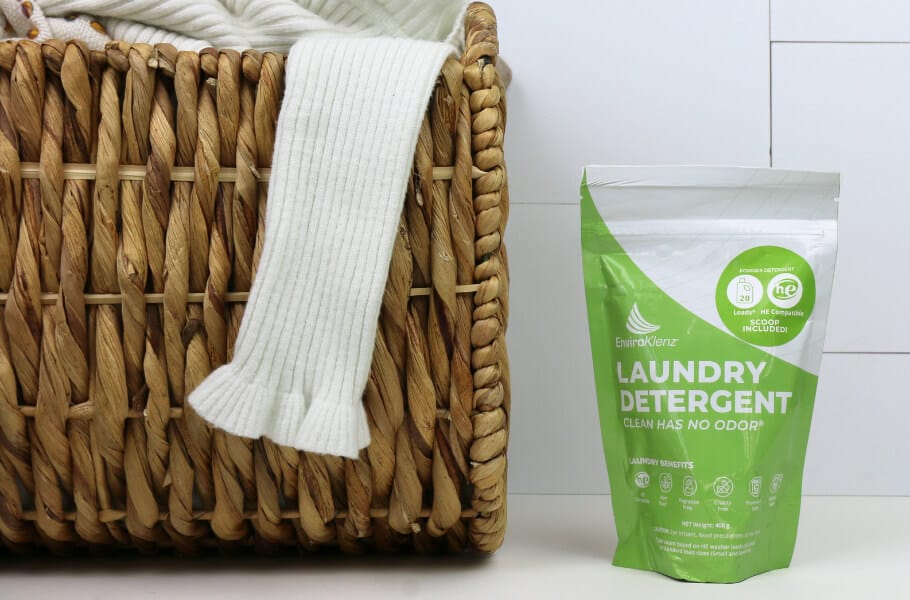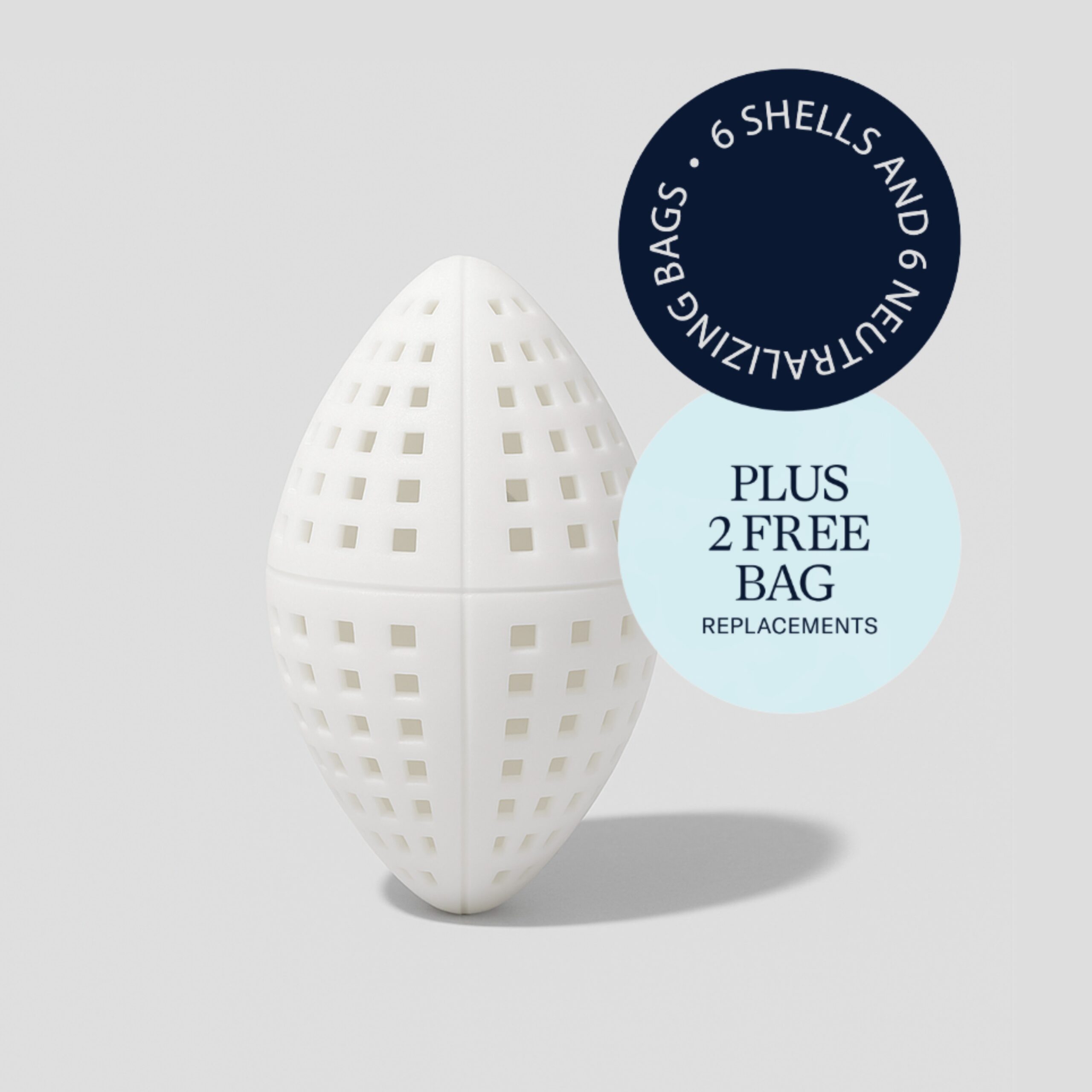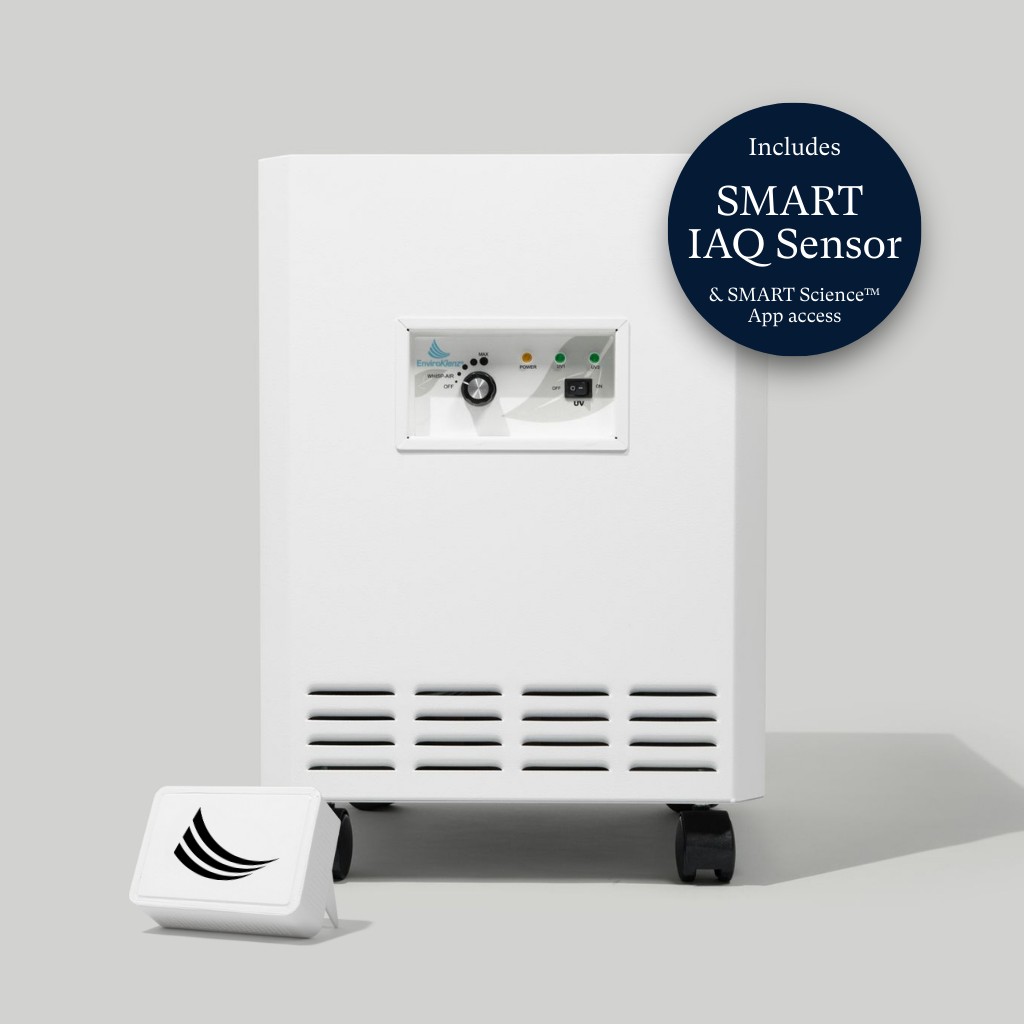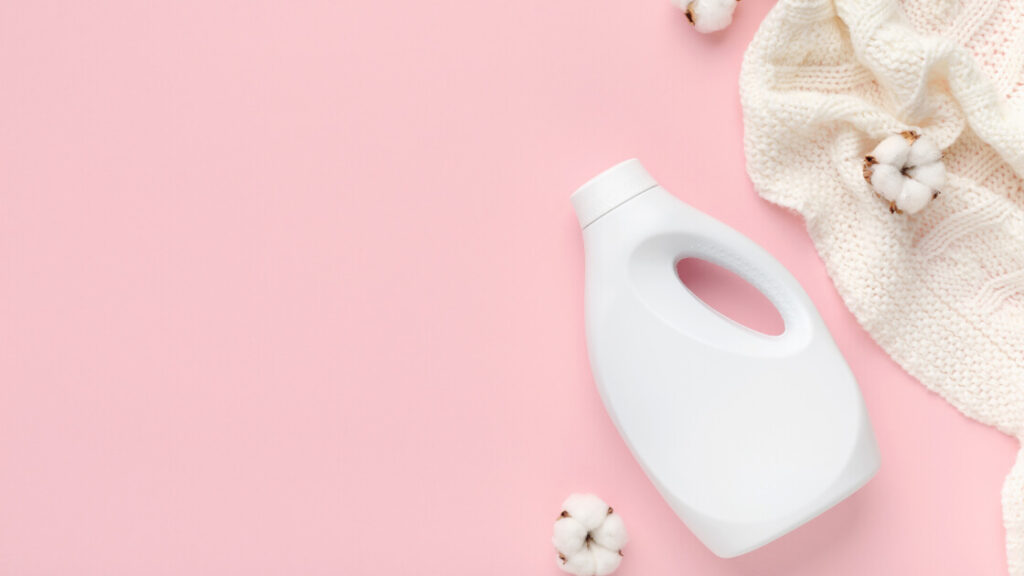When you select a non-toxic laundry detergent, it’s important to carefully review ingredients, packaging, and other details to ensure the best quality.
Why is it important to choose a non-toxic laundry detergent? There are many brands of natural laundry products available on the market.
Selecting an environmentally-conscious cleaner is not only essential in reducing waste on our planet, but it also helps decrease or eliminate potential risks to your health and home, which can result from using traditional laundry detergents.
You may not know, but many conventional laundry detergents contain harmful ingredients that agitate allergies and skin sensitivities and adversely impact your health.
Chemical-free laundry detergent is not only safer, but it can be cost-effective and easy to find for your home. Let’s explore the benefits of cleaner laundry products and how to find the best option for you.
Understanding Non-Toxic Laundry Detergents

Dangers of Conventional Laundry Detergents
Before we proceed to discuss the numerous reasons why opting for a laundry detergent that is chemical-free is a superior and healthier option, it is imperative to comprehend the numerous reasons why conventional laundry products should be avoided.
Traditional detergents often contain harmful ingredients that cause skin irritation, worsened respiratory conditions, and allergies.
While many mainstream laundry labels don’t appear to list these harmful ingredients, they may contain hidden irritants in the forms of dyes, synthetic fragrances, chlorine, formaldehyde, phthalate, and phosphates.
Some labels might use alternative names for these ingredients, making it hard to identify whether they are safe or harmful.
Choosing chemical-free laundry detergents requires getting familiar with different types of ingredients and whether they are biodegradable or harmful to the environment and your health. Not only can these harsh substances negatively affect you, but they can also impact water sources and the health of aquatic nature.
Benefits of Natural Cleaning Products
You’ll find many advantages when you use non-toxic natural cleaning products. They are environmentally friendly and do not contain any of the dangerous and harsh chemicals commonly found in conventional detergents.
Non-toxic products tend to opt for more natural ingredient options, especially those that are planet or mineral-derived, much like the earth mineral formulations of EnviroKlenz Laundry Products. A non-toxic laundry detergent is safer for individuals prone to rashes and skin irritation due to sensitive skin and allergies.
Since natural laundry products do not contain synthetic dyes, fragrances, or harsh cleaning agents, it’s also gentler on your appliances and clothing. When you replace traditional detergents with safe cleaning products, you’ll contribute to improved air quality, cleaner water, and fewer pollutants.
What to Look for in a Non-Toxic Laundry Detergent
When shopping for a quality, non-toxic laundry detergent, it’s important to review labels and ingredients before you buy. Fragrance-free detergent is often the best option as many scents added to laundry products contain harmful chemicals and may trigger an allergic reaction.
Reading customer reviews and looking for certifications and third-party testing are also vital in finding a high-grade product.
Reading Labels and Ingredients
It’s important to remember how many companies will use “greenwashing” or misleading marketing claims on products that do not meet the standards for eco-friendly detergents.
Some manufacturers use “green” labels and claims on laundry detergents, which are inaccurate, as they may combine natural and harmful ingredients within their product formulas.
Some of the most common natural ingredients to look for include soda ash, baking soda, and coconut castile soap. Choosing a laundry detergent free of optical brighteners, phosphates, and synthetic ingredients is also vital.
Fragrance-Free
Ideally, it’s best to choose a scent-free detergent, as fragrance-based ingredients are often what leave behind irritants and allergy triggers on clothes of chemically-sensitive people; though, some natural products may contain a blend of essential oils, which are safe to use. You can also add a few drops of your favorite essential oil to each load of laundry if preferred.
Safer Preservatives
Potassium sorbate, baking soda, and borax are the best preservatives for natural laundry. You’ll find potassium sorbate as the most common alternative to methylisothiazolinone, which is typically found in traditional laundry detergents.
Safest Cleaning Products: Certifications and Third-Party Testing
One of the most effective ways to choose the best non-toxic laundry detergents is to look for third-party certifications, such as USDA Organic and EcoCert.
You’ll find these credible certifications on natural, safe cleaning products, indicating they have undergone rigorous testing with positive evaluations on their minimal environmental impact. Selecting the safest cleaning products is essential for your home and health.
Consideration of Specific Needs
Once you find quality laundry products, it’s essential to select a detergent that’s specific to your needs, whether you need a heavy-duty product for high-efficiency washing machines or a gentle cleaner for fragile fabrics and baby clothing.
Or maybe, you specifically need a solution to effectively tackle odors or everyday grime. Try looking for clean options that are specially made to address these laundry day issues.
Tips for Using Non-Toxic Detergents
When you choose a suitable non-toxic detergent for your laundry, you’ll find the following tips helpful in getting the most out of your product and enjoying great results.
Learning how to use your non-toxic detergent properly can help you gauge how much to measure for each load, the ideal water temperature, and whether other products are needed for the clean results you are looking for.
- Start With the Proper Dosage
It’s easy to use too much or too little, especially if you are unfamiliar with a particular brand or product. For this reason, follow the dosage guidelines to avoid using too much detergent while enjoying the benefits of a quality product.
Some natural detergents are highly concentrated, so you’ll only need a small amount for each load. Biodegradable laundry strips are a great option if you’re looking for pre-measured doses for each load.
- Wash in Cold Water
Washing your clothing in cold water will save energy while preserving your fabric and colors. Enzymes in non-toxic detergents work best in cold water while preventing fading. Natural laundry products help preserve your clothing, bedding, and other items that you’ll include in each load.
- Skip Fabric Softener
While fabric softeners are often added to add softness and a mild scent to your clothing, you’ll find non-toxic detergents do a great job of achieving this on their own. One or two drops of essential oils are a fantastic option if you want to add a natural scent.
Best Non-Toxic Laundry Detergents

Reviews and Recommendations
What are the best non toxic laundry detergents to consider for your home? It’s important to consider which type of detergent works best for your lifestyle, whether you’re comfortable using single-use, biodegradable strips, laundry powder detergent, laundry detergent sheets, liquid detergent, or laundry soap in a reusable container.
EnviroKlenz offers a great eco-friendly solution for all your laundry needs, and it comes with a unique feature – its powerful FAST-ACT formulation.
EnviroKlenz eco-friendly Laundry Detergent Powder uses the power of advanced earth minerals to not only break down dirt and grime, but also neutralize odors and chemicals that cling to clothes for good, leaving you with clothes that smell and feel truly clean.
Without added fragrances or chemicals of any kind, EnviroKlenz is a safe, planet-friendly option for achieving clean clothes, and it’s highly effective in its cleaning abilities.
Additionally, EnviroKlenz Laundry products are moving towards more sustainable packaging, utilizing biodegradable cardboard and recycled plastic to contain its products.
Conclusion
When you take proactive steps to choose a non-toxic laundry detergent over conventional laundry detergent, you’ll find many advantages in your home, including better air quality, chemical-free laundry, and less risk to your health and well-being. While there are many products to choose from, it’s important to take the time and effort to find the right option for your home.
While some natural detergents are best for small loads and delicate fabrics, others are best for large-scale loads, including bedding and heavily soiled or odorous clothing needing a more potent cleaning agent.
Reviewing customer feedback, recommendations, and ratings can help you choose the best natural detergent option for your budget, household, and personal needs.
EnviroKlenz® Medical Disclaimer:
“Any information that is provided on this website is not for the use by any commercial or personal entity without expressed written consent of the blog author. The material and statements illustrated within this blog are not intended to diagnose, treat, cure, or prevent any diseases or medical conditions. Nor does the author in any way guarantee or validate the validity, totality, or efficacy of any claims and will therefore not be held responsible for the content of any claims. Always consult your medical physician for any specific medical advice or recommendations.”









